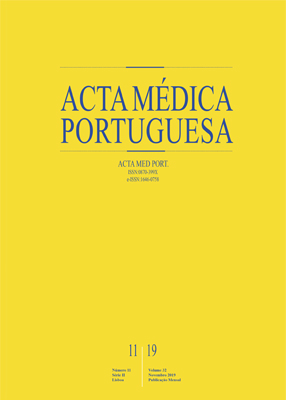Chronic and Refractory Migraine: How to Diagnose and Treat
DOI:
https://doi.org/10.20344/amp.12004Keywords:
Headache Disorders, Secondary/chemically induced, Migraine Disorders/diagnosis, Migraine Disorders/drug therapyAbstract
Migraine is highly prevalent and carries a significant personal, social and economic burden. It is the second cause of disability (years living with disability) worldwide and the first cause under 50 years of age. Chronic migraine (occurring for more than 15 days a month) and refractory migraine (treatment resistant), especially when there is also analgesic overuse, are the most disabling forms of migraine. These three disorders (chronic migraine, refractory migraine and medication overuse headache) are particularly difficult to treat. This article reviews their epidemiology, clinical presentation, diagnostic criteria, risk factors, comorbidities and social and personal impact. The therapeutic options available are discussed and focused on a multidisciplinary approach, non-pharmacological interventions treatment of comorbidities and avoiding analgesic overuse. Prophylactic treatments are mandatory and include the oral prophylactic treatments (topiramate), botulinum toxin type A and the novel monoclonal antibodies against calcitonin gene related peptide or its receptor, which are the first migraine preventive medicines developed specifically to target migraine pathogenesis. In refractory cases, multiple therapies are required including neurostimulation.Downloads
Downloads
Published
How to Cite
Issue
Section
License
All the articles published in the AMP are open access and comply with the requirements of funding agencies or academic institutions. The AMP is governed by the terms of the Creative Commons ‘Attribution – Non-Commercial Use - (CC-BY-NC)’ license, regarding the use by third parties.
It is the author’s responsibility to obtain approval for the reproduction of figures, tables, etc. from other publications.
Upon acceptance of an article for publication, the authors will be asked to complete the ICMJE “Copyright Liability and Copyright Sharing Statement “(http://www.actamedicaportuguesa.com/info/AMP-NormasPublicacao.pdf) and the “Declaration of Potential Conflicts of Interest” (http:// www.icmje.org/conflicts-of-interest). An e-mail will be sent to the corresponding author to acknowledge receipt of the manuscript.
After publication, the authors are authorised to make their articles available in repositories of their institutions of origin, as long as they always mention where they were published and according to the Creative Commons license.









